The Boar Gullinbursti and Skidbladnir, the Finest Ship of All
by Peter Krüger
©2011
[Germanic Astronomy]
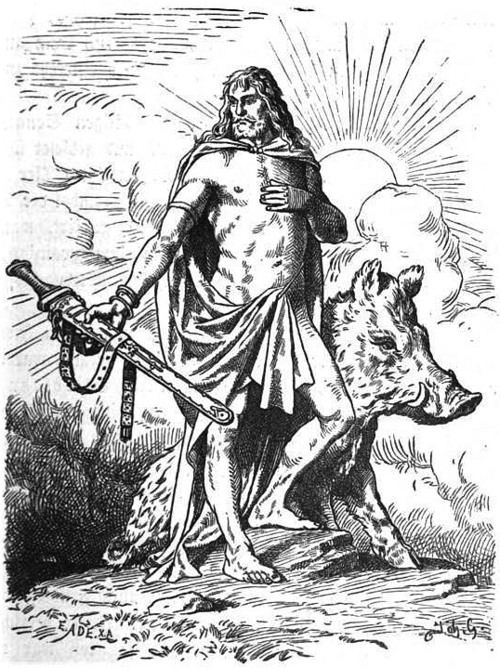
Gullinbursti with the god Frey
1901 painting by Johannes Gehrts.
Gullinbursti
Using an astronomical approach it has been
possible to identify the Norse Gods Thor and Odin with the Latin/Greek
constellations Taurus and Orion. I believe that to identify a
constellation it is best to look at their attributes. In the case of
Thor we found his hammer Mjöllnir depicted as the Pleiades. Odin was
identified as Orion by his spear Gungnir.
In the story
of the creation of Mjöllnir and Gungnir in Skáldskaparmál 43, attributes
of Freyr are also mentioned. There are two items made for him. One is
the ship Skíðblaðnir, which will have a favorable wind wherever its
owner wants to go and which can be folded up like a napkin and carried
in a pouch. The other is the boar Gullinbursti whose bristles glow to
illuminate the way for his owner. No myths involving Skíðblaðnir have
come down to us but Snorri tells us that Freyr rode to Baldr's funeral
in a wagon pulled by Gullinbursti.
In a previous investigation concerning Skírnismál the
constellation Aries (the ram) was brought into connection with Freyr. It
is a small constellation, primarily consisting of three bright stars.
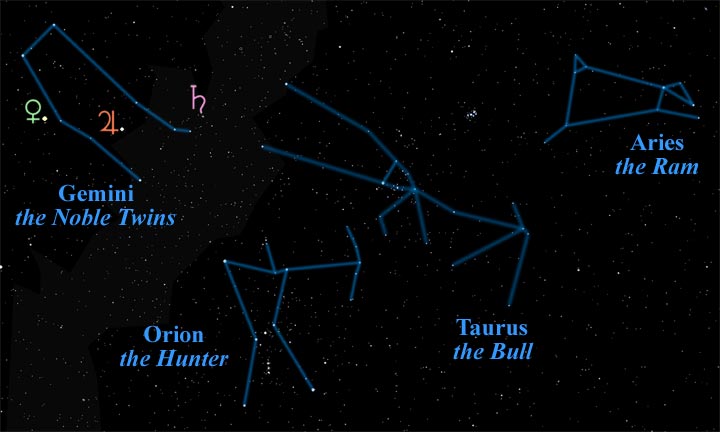
In the sky, these three stars are easily detectable, having a characteristic curved shape. These three stars were most likely seen as the horn of a ram leading “pars-pro-toto” (part-for-total, a part represents the whole) to the name of the constellation. However, if these three stars represent the horn of a ram, i.e. the weapon of a ram, then it would only be a small step to see the three stars as the weapon of another animal: the tusk of a wild boar.
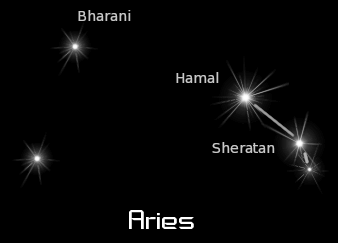

v
In fact, in one tale, Freyr’s boar bears the name
Slidrugtanni (“dangerous tooth”) a perfect fit with the appearance of
the constellation. In German, the tooth of a boar is called Hauer or
Waffen (“weapons”). This indicates that the tooth can also be regarded
as the sword of Freyr. In Arabic tradition, the stars of Aries are seen
as a sword. The three stars of Aries might have been seen not only as a
tooth but also as three bristles of the hackles of a boar: Gullinbursti
(“golden bristles”), whose bristles glow in the dark.
Alfheim Frey
gáfu í árdaga
tívar at tannféi.
Without any evidence, it could also be theorized that the nearby three stars of the Triangulum could have represented a female swine, the swine of Freyja. The Greeks called it the Deltoton, which might also hint at it being a fertility symbol.
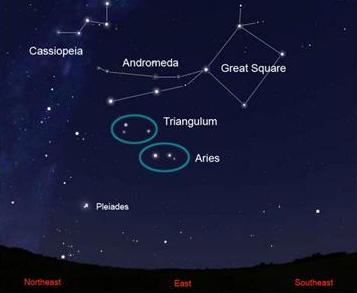
Skidbladnir
– the Finest Ship of All
"Ivaldi's sons went in ancient days
to create Skidbladnir,
the best of ships for shining Frey,
the capable son of Njord
The
boat is first directly addressed in chapter 43; there Gangleri asks
that, if Skíðblaðnir is the best of ships, what else there is to know
about it, and asks if there is no other ship as good or as large as it.
High responds that while Skíðblaðnir is the finest ship and the most
ingeniously created, the biggest ship is in fact Naglfar, which is owned
by Muspell. The Sons of Ivaldi, who High adds are dwarfs, crafted the
ship and gave it to Freyr. High continues that the ship is big enough
for all of the gods to travel aboard it with their war-gear and weapons
in tow, and that, as soon as its sail is hoisted, the ship finds a
favorable wind, and goes wherever it need be. It is made up of so many
parts and with such craftsmanship that, when it is not needed at sea, it
may be folded up like cloth and placed into one's pocket. Gangleri
comments that Skíðblaðnir sounds like a great ship, and that it must
have taken a lot of magic to create something like it.
The
next mention of the ship occurs in Skáldskaparmál where, in chapter 6,
poetic means of referring to Freyr are provided. Among other names,
Freyr is referred to as "possessor of Skidbladnir and of the boar known
as Gullinbursti".
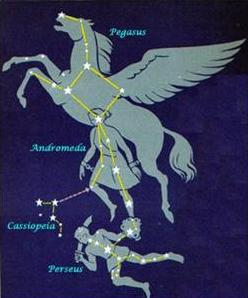
The square
might have been seen as the large sail of a Viking ship. The horsehead
of Pegasus might have been seen as the figurehead of the boat. That the
ship was represented mainly by its sail might explain the obscure
comment that it could be folded up.

A viking
boat with sail extended and an equine figurehead
It seems
that the Great Square, the boat, was also seen as a place of assembly of
the Gods. This explains the comment:
It would not
have been the only time that a culture would make the connection with a
boat as Allen states in his “Star names” about Pegasus:
Bochart said that the word is a compound of the Phoenician Pag, or Pega, and Sus, the Bridled Horse, used for the figurehead on a ship, which would account for the constellation being shown with only the head and forequarters; but others have considered it of Egyptian origin, from Pag, "to cease," and Sus, "a vessel," thus symbolizing the cessation of navigation at the change of the Nile flow. From this, Pegasus seems to have been regarded, in those countries at least, as the sky emblem of a ship. In the {Page 324} old work the Destruction of Troye, we read of "a ship built by Perseus, and named Pegasus, which was likened to a flying horse."